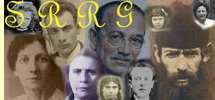"The district of Galicia, established in August 1941, comprised the Stanislav and Tarnopol provinces and the eastern part of the Lvov province, and consisted of 16 counties. The 1931 census report indicated a Jewish population in this area of 500,000. As a result of the great influx of refugees from Nazi-occupied Poland in the fall of 1939, the number of Jews had considerably increased, and it is estimated that at the outbreak of German-Soviet hostilities, there were 600,000?650,000 Jews in the area, taking into account the natural increase from 1931 to1941. The German invasion was accompanied from the very beginning by the mass murder of Jews, initiated and perpetrated by local Ukrainians with the support and participation of the Einsatzkommandos and the German army. Pogroms took place in Lvov (on the "Petlyura Days," July 25 and 27), in Tarnopol, Zolochev, and Borislav. Many of the Jews living in the countryside, about 25% of the total Jewish population, were murdered in this period.
In the part of Galicia temporarily occupied by the Hungarian army (Kolomya, **Borshchev, and Gorodenka), the situation was quite different, the Hungarian commanders taking the Jews under their protection and preventing murders from taking place. During the short period of German military occupation, until Aug. 1, 1941, when its civilian administration took over, several tens of thousands of Jews were killed. The civilian administration immediately introduced the anti-Jewish legislation applying to the General Government. In fact, some of the provisions of this legislation were applied even before a "legal" framework was created.
The first ghettos were set up in the beginning of October at Stanislav (for about 30,000 Jews) and Tarnopol (18,000). These were followed in the spring of 1942 by ghettos in Kolomya and Kolomya county, and at Chortkov. By the second half of 1942, ghettos existed in all the cities and towns, and a large part of their population had already been deported to Belzec. The last ghetto to be established was the one at Lvov, in August?September 1942, after several postponements. This came after the great Aussiedlung action, 36,000 surviving out of a population of about 150,000. Krueger's decree of Nov. 10, 1942, provided for 32 ghettos in the Galicia district, in Lvov, Stanislav, Tarnopol, Chortkov, Stryj, Drogobych, Sambor, Borshchev, Zholkva, Brody, Rava-Russkaya, Rogatin, and Skalat.
Large-scale physical extermination campaigns began in the second half of 1941 and were initially directed mainly against Jews in the professions and intellectuals. During the High Holiday period, on Oct. 12, 1941, about 10,000 Jews were shot to death at the Jewish cemetery of Stanislav. In November numerous executions took place in Lvov, when the first attempt was made to organize a ghetto there, and mass shootings occurred in Kolomya county in December of that year. This is only a partial listing and it is estimated that some 100,000 Jews were murdered in July 1941?March 1942. In the latter month, the extermination camp at Belzec went into operation and from then until the end of 1942, about 300,000 Jews?50% of the Jewish population of the district?were deported to Belzec or shot on the spot, or taken away for execution in the forests. The others remained for a short while in the ghettos and labor camps, and by June 1943 they were all liquidated. According to SS-Gruppenfuehrer Fritz Katzmann's report on the "Final Solution" in Galicia, only 21,000 Jews were left in Galicia, distributed in over 21 camps, the largest of which was the Janowska Street camp in Lvov. Selected workers from liquidated ghettos were transferred to this camp in Lvov, while those who were no longer fit for work were executed in the vicinity. In the second half of 1943, nearly all the Jewish labor camps were liquidated and their inmates murdered. In this period, several thousand Jews who had been engaged in agricultural work were also murdered."(1)
[Isaiah Trunk]
|
**Due north of Mielnitza/Mielnica; Borschov was the Administrative District city, Repository for Mielnica's records.
|




